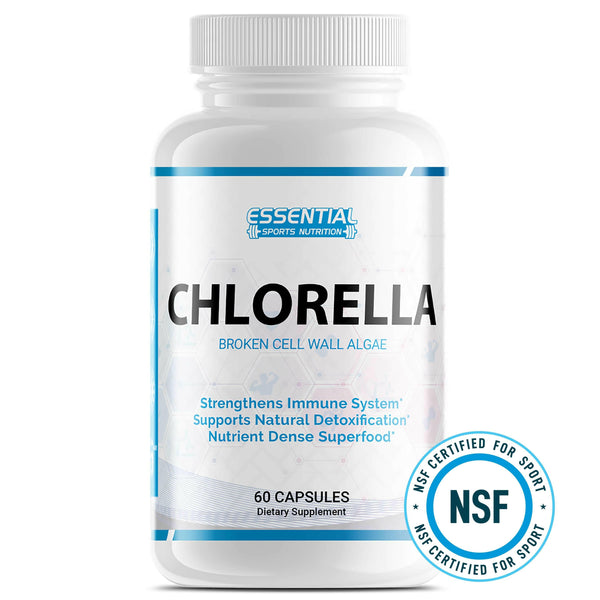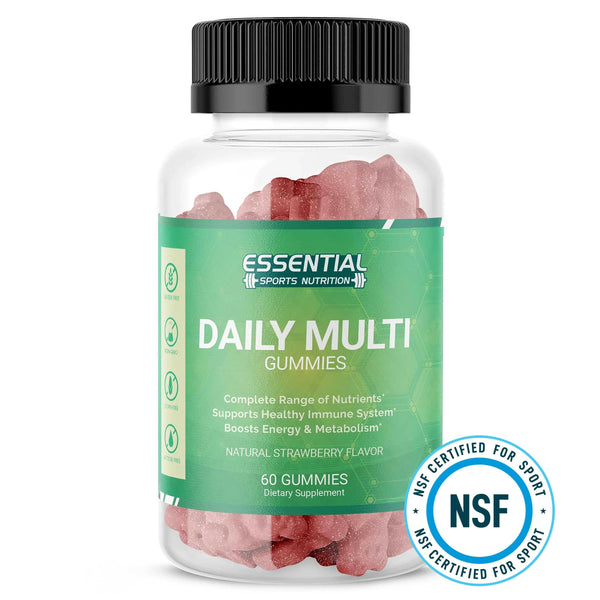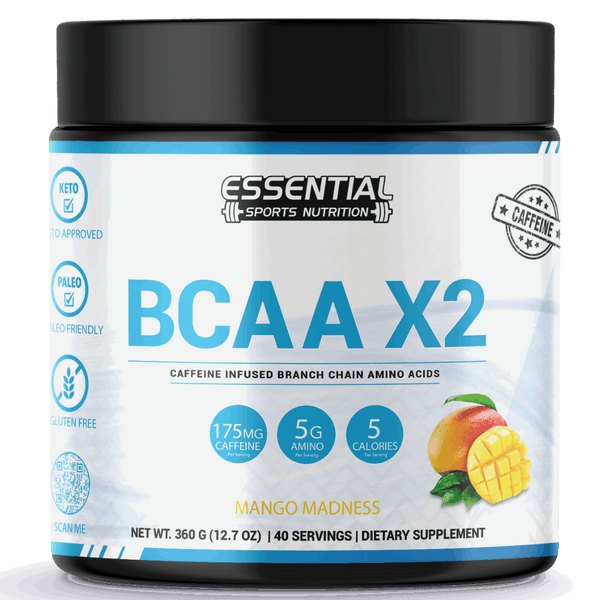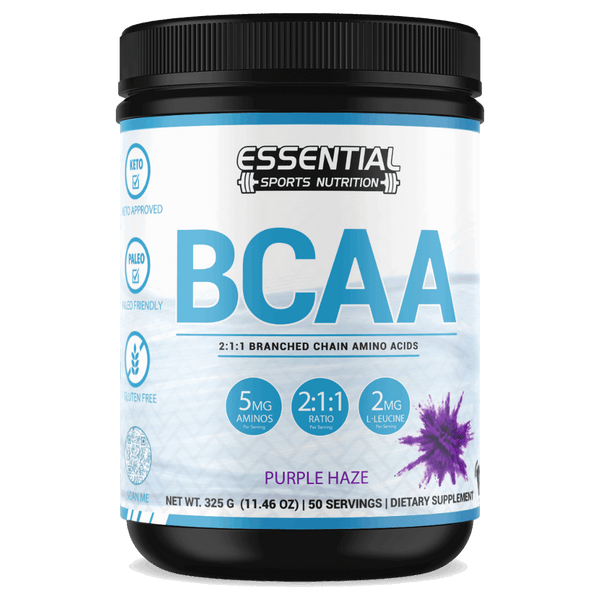Benefits of Ice Baths: Cold Water Works Miracles for Your Body
Are you searching for a way to ease those aching muscles after a tough workout? Perhaps you've heard of the age-old remedy favored by athletes and health enthusiasts alike: the mighty ice bath.
It's not just about bracing yourself against chilly waters; there's science behind why so many swear by this cool treatment.
Ice baths aren't just about shocking your system – they harness the power of cold therapy to quell inflammation, soothe soreness, and even rev up recovery times. This article isn't only going to dive into how ice baths can transform your post-workout routine; it'll also wrap you in the warmth of all their surprising health benefits.
Key Takeaways
- Ice baths reduce inflammation and muscle soreness, helping athletes and fitness enthusiasts recover from intense workouts faster.
- The cold exposure from ice baths stimulates the body's natural healing process, promoting better immune function and potentially boosting mental well-being through increased endorphin release.
- It's essential to safely engage in ice bath therapy by gradually acclimating to the cold, limiting sessions to 10-15 minutes, and not overdoing it more than three times a week.
- People with certain medical conditions like heart disease or poor circulation should consult healthcare professionals before starting ice bath therapy due to potential risks.
- The popularity of ice baths is rising outside of elite sports circles, with practices like the Wim Hof Method introducing more people to the benefits of cold exposure for health enhancement.
Exploring the Science of Ice Baths
Ice baths work by constricting blood vessels and reducing blood flow to inflamed areas, which helps alleviate swelling and muscle soreness. There are different types of cold water therapy, including whole-body cryotherapy and cold-water immersion, each with their own unique benefits for the body.
How Do Ice Baths Work?
Ice baths stimulate the body's natural healing process in a way that might seem counterintuitive at first. Immersing your body in cold water causes blood vessels to constrict, which reduces blood flow to the muscles.
This vasoconstriction helps decrease swelling and inflammation, especially after intense physical activity.
The exposure to cold also triggers a systemic response from your central nervous system. It prompts the release of endorphins, which are natural painkillers and mood elevators, helping alleviate muscle soreness known as delayed-onset muscle soreness (DOMS).
As you step out of an ice bath, the tissues warm up again causing a return of oxygenated blood that can help heal damaged muscles.
Such cold-water immersion plays with our body's core temperature too. A dip into icy waters lowers it significantly – this is beneficial immediately after workouts where high temperatures could pose risks such as heat stroke or hyperthermia.
The shock of extreme cold also jumpstarts your cardiovascular system; heart rate increases to maintain warmth internally while simultaneously lowering high blood pressure once you're out due to vasodilation effects.
It’s these physiological changes that contribute towards reducing long-term injury risk and boosting overall recovery times for athletes.
Types of Cold Water Therapy
Cold water therapy comes in various forms, each with unique benefits for health and recovery. Many people use these methods to enhance their physical and mental well-being.
- Full-body immersion: One common type is full-body immersion, often known as an ice bath or cold-water immersion (CWI). Here, individuals submerge their bodies in ice-filled water to constrict blood vessels and reduce muscle inflammation. This method is especially popular among athletes following intense workouts.
- Localized cold treatment: For targeted relief, localized cold treatment applies cold to specific body areas. Using ice packs or cryotherapy chambers, this therapy can decrease swelling and provide pain relief at a particular site like a sore knee or an inflamed shoulder.
- Cold showers: Taking a cold shower can invigorate the body by enhancing circulation and giving a sudden jolt to the system, which some believe can strengthen the immune system.
- Contrast water therapy: This involves alternating between hot and cold water exposure. It boosts nutrient-rich blood flow throughout the body by repeatedly dilating and constricting vessels, aiding in muscle recovery and reducing delayed onset muscle soreness.
- Ice massage: Another form of localized treatment involves massaging areas with ice. The massage combines the benefits of traditional massage techniques with the analgesic effect of cooling, helping relieve muscle knots or spasms.
- Cold compression therapy: Combining cold temperature with pressure helps minimize fluid build-up and inflammation after injury. Devices are available that deliver consistent temperature-controlled compression to affected areas.
The Proven Health Benefits of Ice Baths

Ice baths have been shown to reduce inflammation and swelling, alleviate muscle soreness, speed up exercise recovery, lower core body temperature, bolster immunity, and enhance mental well-being.
These benefits make ice baths a popular choice for athletes and wellness enthusiasts looking to improve their physical performance and overall health.
Reduces Inflammation and Swelling
Plunging into an ice bath causes your blood vessels to narrow, which can lead to a significant decrease in inflammation and swelling. This vasoconstriction helps flush out toxins that contribute to soreness and swelling by encouraging the flow of fresh blood once you warm up.
For people with injuries or who have just finished intense workouts, this process is crucial for quickening recovery times and preventing chronic inflammation.
Cold water immersion (CWI), often found in an icy bath setup, actively reduces the body's inflammatory response after exercise. Athletes have relied on this technique for years to recover from muscle strain and joint pain more efficiently.
The cold temperatures not only reduce immediate puffiness but also help manage long-term issues like rheumatoid arthritis by slowing down the processes that cause painful swelling.
Alleviates Muscle Soreness
Ice baths are an effective remedy for alleviating muscle soreness. The cold temperature causes vasoconstriction, leading to a reduction in inflammation and swelling, which helps relieve the discomfort associated with sore muscles.
Additionally, ice baths can provide analgesia and transfer temperature, contributing to their ability to alleviate muscle soreness. This method has long been favored by athletes as a means of recovering from intense workouts and minimizing post-exercise soreness.
The proven benefits of ice baths extend beyond simply reducing muscle soreness; they also contribute to improved exercise recovery, mental well-being, and energy levels. Athletes have relied on the therapeutic effects of ice baths for years, recognizing their ability to minimize post-workout discomfort and enhance overall performance.
Speeds Up Exercise Recovery
Ice baths accelerate exercise recovery by reducing inflammation, swelling, and muscle soreness. The cold temperature constricts blood vessels, facilitating the removal of metabolic waste and minimizing tissue damage.
Additionally, ice baths can enhance mental well-being, improving focus, mood, and energy levels post-exercise. Studies have suggested that these benefits are attributed to the analgesic effects of cold therapy.
Furthermore, ice baths stimulate vasoconstriction and play a pivotal role in transferring temperatures from the body's core to its periphery. This leads to an overall lower core body temperature following intense physical activity while promoting glycemic control.

Lowers Core Body Temperature
Ice baths play a crucial role in lowering core body temperature, especially after intense physical activity or exposure to hot weather. Submerging oneself in cold water leads to constriction of blood vessels, which reduces the flow of blood and subsequently lowers body temperature.
As a result, this process aids in reducing inflammation and can speed up recovery post-exercise. Additionally, by lowering core body temperature, ice baths can help alleviate muscle soreness and promote overall well-being.
The process of submersion in cold water triggers vasoconstriction, causing a decrease in skin temperature and consequently bringing down the internal body heat. Overall, this cooling effect helps to mitigate the stresses placed on the body during physical exertion or exposure to high temperatures while also contributing to improved recovery times and reduced muscular discomfort.
Bolsters Immunity
Ice baths have been found to bolster immunity by stimulating the body's natural defenses. The cold temperature triggers a response that activates immune system functions, potentially enhancing the body's ability to fight off infections and illnesses.
This immune-boosting effect of ice baths is part of their overall health benefits, providing yet another reason for individuals to consider incorporating this therapy into their wellness routines.
The immune-stimulating properties of ice baths are attributed to the body’s response to cold stress, which can lead to improvements in circulation and an increase in white blood cell count.
Enhances Mental Well-being
Ice baths have been gaining attention for their potential to enhance mental well-being. The exposure to cold temperatures during an ice bath triggers the release of endorphins and norepinephrine, which are neurotransmitters associated with mood regulation and stress reduction.
This can lead to improved focus, mood, and energy levels. Additionally, the practice of enduring discomfort in a controlled environment may contribute to better stress management and resilience over time.
Furthermore, research suggests that regular exposure to cold therapy such as ice baths may help alleviate symptoms of major depressive disorders by stimulating the release of serotonin – a neurotransmitter linked to feelings of happiness and well-being.
How to Safely Take an Ice Bath

To safely take an ice bath, it's crucial to prepare your body by gradually acclimating to the cold water. The ideal duration and frequency of ice baths should be carefully considered to avoid potential risks.
Preparing for an Ice Bath
Before taking an ice bath, it's crucial to have everything prepared in advance. You can easily prepare to take an ice bath even at home. Here's what you need to do:
- Fill the tub with cold water, ensuring it's at a temperature of around 50 - 59 degrees Fahrenheit.
- Place several bags of ice into the water to attain the desired temperature for the bath.
- Consider using a thermometer to accurately measure the temperature of the water.
- Create a comfortable environment by dimming lights and playing soothing music if desired.
- Have a timer handy to monitor the duration of your ice bath session.
- Make sure you have a warm towel or robe nearby for post-bath warmth and comfort.
- Some like to take a hot shower after an ice bath to warm their body.
Ideal Duration and Frequency
Ice baths are most effective when taken for 10-15 minutes at a time, allowing the body to experience the benefits of cold therapy without overexposure. For optimal results, aim to take ice baths 1-3 times per week, and adjust according to your individual recovery needs. It's important to listen to your body and consult with a healthcare professional if you have any concerns or pre-existing conditions. Remember that consistency is key in reaping the full benefits of ice baths for recovery and overall well-being.
- Duration: Aim for 10-15 minutes of immersion in an ice bath to allow the body to experience the therapeutic effects without risking overexposure.
- Frequency: Taking ice baths 1-3 times per week can effectively aid in muscle recovery and reduce inflammation.
- Individualization: Adjust the duration and frequency based on your body's response and specific recovery needs.
- Monitoring: Listen to your body and be mindful of any discomfort or unusual reactions during or after an ice bath session.
- Consultation: Seek guidance from a healthcare professional, especially if you have any underlying health conditions or concerns regarding cold exposure.
- Consistency: Regular use of ice baths can lead to cumulative benefits in terms of exercise recovery, immune function, and mental well-being.
Potential Risks and Considerations
Before trying ice bath therapy, it's important to understand the potential risks and considerations associated with cold water exposure. From recognizing overexposure symptoms to knowing when to avoid ice baths altogether, this section will shed light on the precautions necessary for a safe and effective experience.
When to Avoid Ice Baths
Individuals with certain medical conditions should exercise caution when considering ice baths. People with heart conditions, circulation problems, or Raynaud's syndrome should consult a healthcare professional before attempting ice baths.
Additionally, individuals with a history of hypothermia or cold urticaria should avoid ice baths to prevent potential complications. It is crucial for those prone to irregular heartbeats or arrhythmias to seek medical advice before exposing themselves to the cold shock response that can occur during an ice bath.
Furthermore, individuals with nerve damage or conditions affecting blood flow should approach ice baths cautiously due to the risk of exacerbating these issues. Those who are unsure about their suitability for ice baths due to underlying health concerns must seek guidance from a qualified healthcare provider.
Recognizing Overexposure Symptoms
Recognizing overexposure symptoms is crucial when taking an ice bath. Signs of overexposure may include shivering, intense and prolonged cold sensation, numbness or tingling in extremities, confusion, dizziness, or difficulty speaking.
It's essential to be mindful of these indications to prevent potential risks associated with prolonged exposure to cold temperatures.
Overexposure symptoms such as extreme shivering and persistent cold sensations signal the need to exit the ice bath immediately. Numbness or tingling in the extremities can indicate reduced blood flow due to prolonged exposure and should prompt a swift exit from the cold water.
Ice Baths in Practice and Popularity

Ice baths have gained popularity among athletes and wellness enthusiasts as a method for enhancing recovery and improving overall well-being. The Wim Hof Method, which incorporates cold exposure as part of its training, has also influenced the growing interest in ice baths.
From Athletes to Wellness Enthusiasts
Ice baths have transitioned from being an exclusive recovery tool for elite athletes to gaining widespread popularity among wellness enthusiasts and the general population. Athletes have long relied on ice baths to reduce inflammation, alleviate muscle soreness, and expedite post-exercise recovery.
However, with growing awareness of the holistic benefits of cold-water therapy, a broader audience has embraced this practice as part of their health and wellness regimen.
Wellness enthusiasts who prioritize physical recovery, mental well-being, and immune system support are increasingly turning to ice baths as a natural way to enhance overall health.
The accessibility of information about the multitude of proven benefits – from reducing inflammation and boosting immunity to improving mental clarity and sleep quality – has contributed to the shift in perception regarding ice baths.
As individuals seek effective strategies for active recovery, stress reduction, and overall vitality, ice baths have emerged as a valuable tool that transcends the realm of competitive sports.
The Wim Hof Method and Its Influence
The Wim Hof Method, developed by "The Iceman" himself, has gained popularity for its influence on the body's response to cold exposure. This method combines breathing exercises, meditation, and gradual exposure to the cold.
Proponents claim numerous benefits such as improved immunity and reduced stress levels. The technique involves controlled hyperventilation followed by breath retention, which may lead to increased adrenaline production and a stronger ability to withstand environmental stress.
Wim Hof has been known for his extraordinary ability to endure extreme cold temperatures without experiencing negative health effects like frostbite or hypothermia. His method has piqued the interest of researchers who have conducted studies supporting its potential benefits in mitigating symptoms of conditions like fibromyalgia while improving mood and energy levels.
Conclusion
Ice baths provide numerous health benefits such as reducing inflammation and alleviating muscle soreness. These strategies are practical and easy to implement, enhancing recovery and well-being.
The importance of these approaches cannot be overstated; their potential impact on overall health is significant. For further exploration, readers may seek additional resources or professional guidance in implementing ice bath therapy.
As you consider integrating this method into your routine, remember that taking proactive steps toward better health can lead to remarkable improvements.
Benefits of an Ice Bath FAQs
Q: What are the potential benefits of taking ice baths?
A: Taking ice baths may help reduce muscle pain, boost recovery after intense workouts, lower core body temperature, and decrease inflammation.
Q: Is it safe to take an ice bath at home?
A: Taking an ice bath at home can be safe as long as precautions are taken such as gradually adding ice to the water and not staying in the ice bath for too long.
Q: What are the risks of ice baths?
A: Risks of ice baths may include potential effects on blood pressure, skin irritation, and potential complications for individuals with certain health conditions. It’s important to consult a healthcare professional before using ice baths.
Q: What does the research say about the benefits and risks of ice baths?
A: Studies and systematic reviews on the benefits and risks of ice baths are ongoing. While some research supports the benefits of post-exercise cold water immersion, experts say more research is needed to fully understand the effects of cold water immersion on the body.
Q: What are the potential benefits of using ice baths for athletes?
A: Potential benefits of using ice baths for athletes may include improved recovery, reduced muscle soreness, and enhanced overall performance. Professional athletes and ice bath enthusiasts often use ice baths as a recovery tool.
Q: How does taking an ice bath help reduce muscle pain?
A: Immersing the body in cold water, such as in an ice bath, may help reduce pain and inflammation in muscles by numbing nerve endings and decreasing blood flow to areas with swelling or soreness.
Q: What precautions should be taken when using ice baths?
A: It’s important to note that taking an ice bath for too long or using water at an extremely low temperature can have adverse effects. It’s recommended to gradually add ice to the water and limit the duration of exposure to cold water.
Q: Are there specific water temperature recommendations for ice baths?
A: Experts recommend a water temperature between 50 to 59 degrees Fahrenheit (10 to 15 degrees Celsius) for ice baths to provide benefits without causing harm to the body.
Q: Can ice baths have potential effects on blood pressure?
A: The shock of cold water immersion can initially cause a rise in blood pressure, but there is ongoing research to understand the long-term effects of ice baths on blood pressure and the cardiovascular system.
Q: How can ice baths be used to improve recovery and performance for athletes?
A: Ice baths can be utilized for reducing muscle soreness, speeding up recovery, and enhancing athletic performance by promoting vasoconstriction and decreasing inflammation in the body after intense physical activity.





























